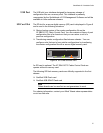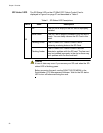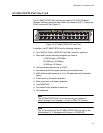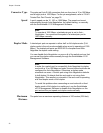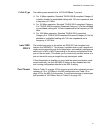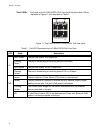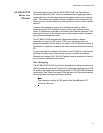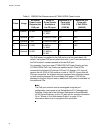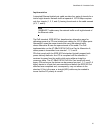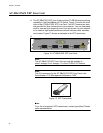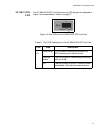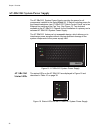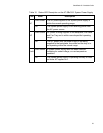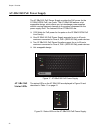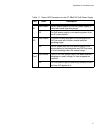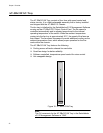
SwitchBlade x3112 Installation Guide
35
Implementation
A standard Ethernet twisted-pair cable contains four pairs of strands for a
total of eight strands. Network traffic at speeds of 10/100 Mbps requires
only four strands (1, 2, 3, and 6), leaving four strands in the cable unused
(4, 5, 7, and 8).
Note
1000BASE-T cables carry the network traffic on all eight strands of
the Ethernet cable.
The PoE standard, IEEE 802.3at, describes two alternative ways for
delivering power to a PD over twisted-pair cabling for 10/100 Mbps ports.
Alternative A uses the same strands that carry the network traffic
where Alternative B uses the spare strands of the cable. The PoE
implementation on the AT-SBx31GP24 PoE Line Card is Alternative A,
where power is transmitted over strands 1, 2, 3, and 6.
PDs that comply with the IEEE 802.3at standard typically support both
power delivery methods. As a PD is compliant with the standard, it
receives its power from the switch while using either a straight or
crossover cable. The AT-SBx31GP24 PoE Line Card works with most
legacy PDs as long as the device can be powered on pins 1, 2, 3, and 6. A
legacy device is a node that was manufactured before the IEEE 802.3at
standard was completed and, consequently, may not adhere to the
standard. If this is the case, a straight (MDI) cable may be needed to
insure that the DC polarity is correct.



